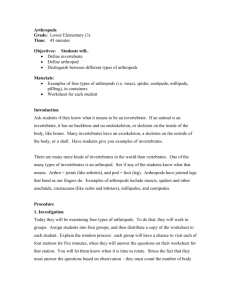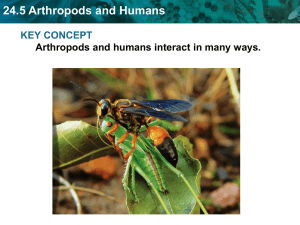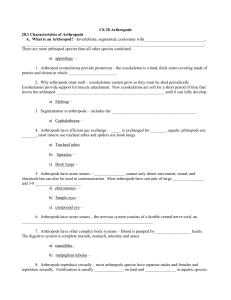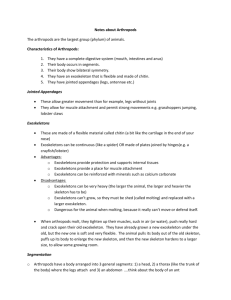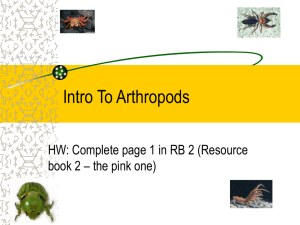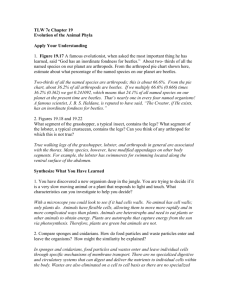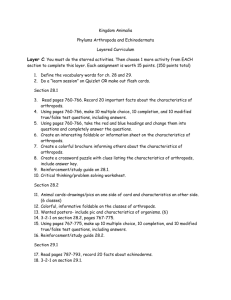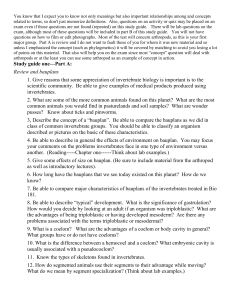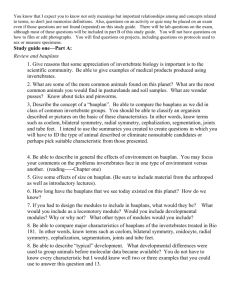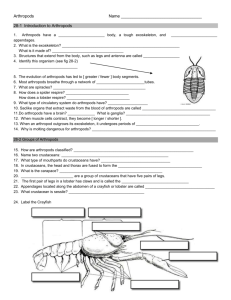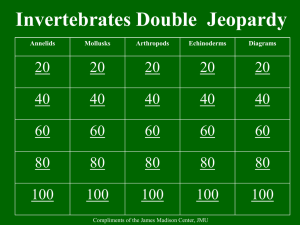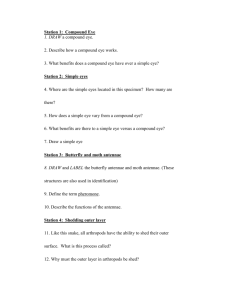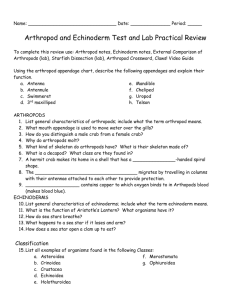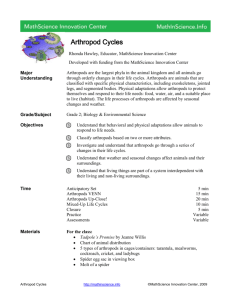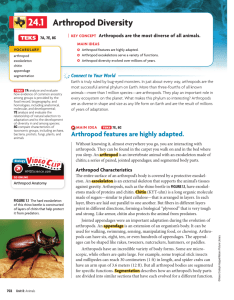Science Lesson Plan 6
advertisement
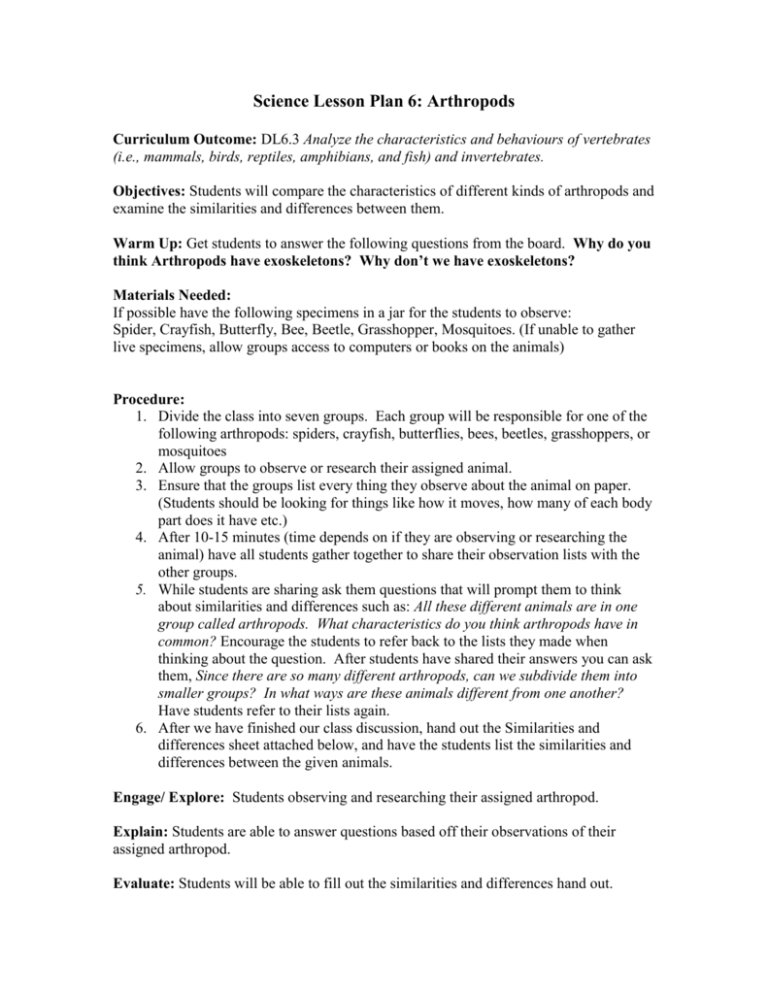
Science Lesson Plan 6: Arthropods Curriculum Outcome: DL6.3 Analyze the characteristics and behaviours of vertebrates (i.e., mammals, birds, reptiles, amphibians, and fish) and invertebrates. Objectives: Students will compare the characteristics of different kinds of arthropods and examine the similarities and differences between them. Warm Up: Get students to answer the following questions from the board. Why do you think Arthropods have exoskeletons? Why don’t we have exoskeletons? Materials Needed: If possible have the following specimens in a jar for the students to observe: Spider, Crayfish, Butterfly, Bee, Beetle, Grasshopper, Mosquitoes. (If unable to gather live specimens, allow groups access to computers or books on the animals) Procedure: 1. Divide the class into seven groups. Each group will be responsible for one of the following arthropods: spiders, crayfish, butterflies, bees, beetles, grasshoppers, or mosquitoes 2. Allow groups to observe or research their assigned animal. 3. Ensure that the groups list every thing they observe about the animal on paper. (Students should be looking for things like how it moves, how many of each body part does it have etc.) 4. After 10-15 minutes (time depends on if they are observing or researching the animal) have all students gather together to share their observation lists with the other groups. 5. While students are sharing ask them questions that will prompt them to think about similarities and differences such as: All these different animals are in one group called arthropods. What characteristics do you think arthropods have in common? Encourage the students to refer back to the lists they made when thinking about the question. After students have shared their answers you can ask them, Since there are so many different arthropods, can we subdivide them into smaller groups? In what ways are these animals different from one another? Have students refer to their lists again. 6. After we have finished our class discussion, hand out the Similarities and differences sheet attached below, and have the students list the similarities and differences between the given animals. Engage/ Explore: Students observing and researching their assigned arthropod. Explain: Students are able to answer questions based off their observations of their assigned arthropod. Evaluate: Students will be able to fill out the similarities and differences hand out. Arthropod Battle! Name: Date: List the similarities and differences that you can think of for each of arthropods listed: Butterfly vs Ant Similarities Differences Spider vs Crab Similarities Differences Teacher Notes: What is an arthropod? An arthropod is an invertebrate animal whose body consists of an exoskeleton. There are three subgroups of arthropods: insects, arachnids, crustaceans. Why do Arthropods have exoskeletons? Arthropods have exoskeletons to support and protect their bodies. Exo means outside, so their skeletons are on the outside of their body, while humans have their skeletons on the inside of our bodies. What characteristics do you think arthropods have in common? Students may come up with a lot of common characteristics such as the amount of legs some have, wings etc. But one of the most important ones is the fact that they all have exoskeletons. In what ways are these animals different from one another? For this question there many answers that the students can come up with because there are many differences between them. One example would be the amount of legs they have i.e. Centipede >30 legs, Crayfish>10 legs, Spider>8 legs, etc. Invertebrates Soft Body Parts Worms Porifera (Sponge) Mollusks Hard Skin Covering Cnidarians Arthropods Echinoderms
